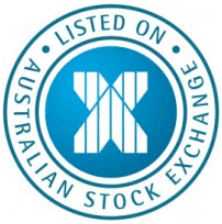
Chris Weston, Chief Market Strategist at IG Markets
The trade continues to do more of what has worked well all year long.
That means selling EUR/USD and AUD/USD, while buying USD/JPY, European debt and developed market equities. The momentum trade has been a key theme this year and, as in life, if something is working, do more of it.
It feels as though we’re going to see a melt-up into year-end in equities. So, unless the news flow drastically turns more bearish, then money managers need to be invested if there is even a chance of another 2% upside in the S&P 500. As said before, if your fund is outperforming the benchmark you simply want the year to end now, while those who are just missing the benchmark performance will try and generate any outperformance (alpha) where possible and that generally should keep markets bid.
The S&P 500 has made another record high, which is impressive given the bond curve has flattened as a result of the front end (two year bond yield) moving up again, while the ten-year held firm. The top of the channel drawn from the May 2013 high comes in at 2,100, so the index can gravitate here in the short-term, although I would be fading the index around 2,100 as a short-term trade here.
European markets should remain supported on open tonight and, as recently detailed, are testing critical resistance. A lot will be down to today’s actions from the European Central Bank (ECB) and the subsequent Mario Draghi press conference, but it seems a matter of time before we see breakouts in a number of the key European markets.
Mario Draghi in tune with market expectations
Draghi would of course be cognisant that the Italian and Spanish ten-year bond has fallen from 4% to below 2% this year, while the German 10-year bund has fallen from 1.9% to 0.74%. The Eurostoxx index has rallied 7.5% since the middle of November, so it’s fairly clear that traders have bid up these markets to front a future government bond buying program. EUR/USD is eyeing a break of the 1.23 handle and onto my long held target of the 12-month moving average, which currently stands at $1.2228 and just above the multi-year trend support.
Comments from ECB members Draghi, Coeure and Constancio have raised expectations of late, but there is at best a 5% chance we get a full blown government bond buying program announced today. What could be announced is that the ECB intend to buy corporate bonds. This would increase the scope of assets the central bank can buy and, in turn, help them achieve a bigger balance sheet. Still, rallies in EUR/USD on the back of disappointment here should be sold in my opinion.
Asia has seen further upside as well, with the ASX 200 putting on 0.9%, the CSI 300 +4% (stay long the A50 index) and Nikkei +0.9%. Japanese traders are eyeing USD/JPY with interest as ¥120.00 is firmly in sight. There will be clear options barriers at ¥120.00. A strong payrolls report on Friday, with better signs of wage growth, would signal a break of ¥120.00 is on the cards.
The hunt for yield to work again in 2015
The ASX 200 is finding support in financial names, with some good buying in certain industrial names. Australian retail sales and trade data were better than expected, but if you look at market pricing, traders didn’t flinch with the swaps markets now fully pricing in an interest rate cut over the coming 12 months. So, it seems what has worked well for much of 2014 could work well again in 2015.
If you believe that the Goldman and Deutsche call of a cash rate of 2% is likely to materialise – and it’s not reflected in market pricing – then once again the Reserve Bank of Australia are pushing traders out of the risk curve and into yield to try and achieve income. As long as you don’t think the housing market is going to collapse, then buying CBA for a A$4.20 dividend (this coming year) on 14.5 time’s forward earnings could be attractive.
However, unlike previous periods where we have seen investors search out yield, term deposit rates will be so unattractive (given the deeply negative real rates), that the reliance on hybrids and the wholesale market will be far more significant. Naturally this will hugely affect pricing structure and margins will face headwinds.
The other clear theme is the inflows into companies that earn in USD’s, but report in AUD’s. Judging by comments from the Federal Reserve of late that the Fed may alter its forward guidance in the coming weeks, with a normalisation of rates occurring in mid-2015, then the AUD/USD goes lower and buying those companies seen as a proxy of the AUD should continue to work. At least that is what we are seeing in the market today.